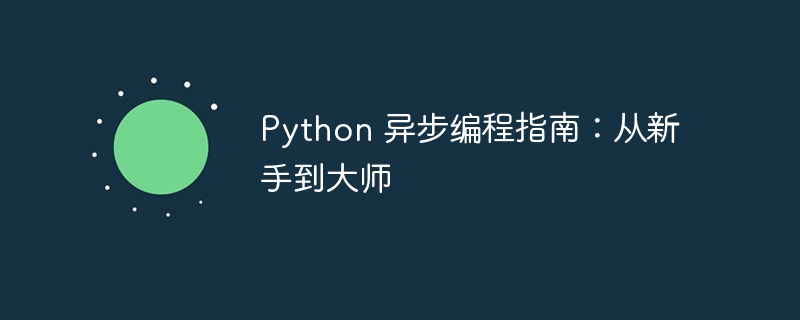
Chapter 1: Basic Knowledge
- Understanding event loops and coroutines
- Master async/await syntax
-
LearnAsynchronous tasks and ioOperation
Chapter 2: Asynchronous Library
- Explore the components of the asyncio library: Event, Lock, Condition, etc.
- Use aioHttpAsynchronous HTTP request
- Use aiofiles for asynchronous file operations
Chapter 3: Concurrency and Parallelism
- UnderstandingThe difference between concurrency and parallelism
- Use asyncio.Task and asyncio.gather for concurrent tasks
- Use ProcessPoolExecutor and ThreadPoolExecutor to perform parallel tasks
Chapter 4: Error Handling and Debugging
- Handling asynchronous exceptions and task cancellation
- Use asyncio.gather and asyncio.wait to catch exceptions
- Use appropriate logging Logging and debugging Tools
Chapter 5: Advanced Techniques
- Exploring async generators and async iterators
- Understanding streaming and pipeline operations
- Using python The new async/with syntax in 3.8
Chapter 6: Best Practices and Performance Optimization
- Avoid excessive concurrency and resource exhaustion
- Use non-blocking I/O and event loop
-
Optimizecode to improve performance and scalability
By following this guide, you will master all aspects of PythonAsynchronousProgramming. From the basics to advanced techniques, you'll gain the knowledge you need to build efficient, scalable, and responsive asynchronous applications. Remember, practice makes perfect, and constant practice and exploration will help you become a master of asynchronous programming in Python.
The above is the detailed content of A Guide to Asynchronous Programming in Python: From Beginner to Master. For more information, please follow other related articles on the PHP Chinese website!






